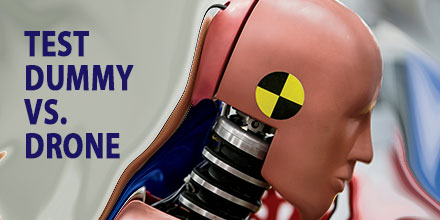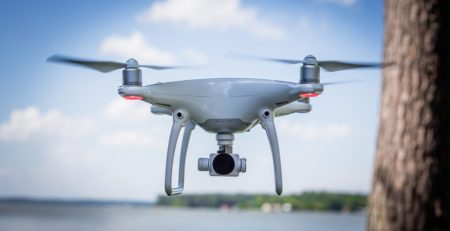Crash test dummy vs. drone
 The push to create the infrastructure to support drone delivery on a massive scale continues. Of course, there are numerous challenges to identify and overcome before this is reality. One such dilemma involves the safety of people on the ground.
The push to create the infrastructure to support drone delivery on a massive scale continues. Of course, there are numerous challenges to identify and overcome before this is reality. One such dilemma involves the safety of people on the ground.
Enthusiasts envision a day when drones populate the skies delivering packages, conducting public safety operations and much more. However, before this occurs, there is a need to address the safety of those on the ground.
Currently, the FAA does not allow for unmanned aerial operations to occur over people. Clearly, this must change if drone use is to become part of everyday life.
Bio-mechanics to the rescue
Virginia Tech’s injury bio-mechanics group teamed with its FAA-approved UAS test site to study the risks unmanned aircrafts pose to people. The injury bio-mechanics group has garnered much respect for their work evaluating injury risk within the automotive and sports industries.
Areas studied, included: impact scenarios, potential injuries, design considerations to minimize injuries, operational limitations, and regulations to help prevent accidents.
The team selected three popular commercial vehicles weighing from 2.6 to just over 24 pounds. In addition, the team setup a test dummy with sensors embedded inside the head and neck. The sensors measured the acceleration and force of the blows inflicted on the dummy. Then the team tested out various impact scenarios – head on and from above – and measured the force of those impacts.
Standard benchmarks were applied to determine how likely the impacts were to cause severe, even life-threatening injuries.
Of course, injury risk increased with the weight of the air vehicle. When dropped directly from above, the likelihood of the smallest craft causing severe neck injury was less than 10 percent. That risk rose to 70 percent with the largest craft.
The drop tests tended to produce the most severe impacts. In deflection tests, the force and resulting injury were reduced. The study also found that drones which broke up upon impact, helped absorb some of the energy and reduced the force of the crash.
Moving forward
The data gathered offers manufacturers insight as to how to design drones in a way that mitigates risk to those on the ground. It will also help inform future regulations of drone operations over people.
These tests are just the beginning. There is a need to conduct more comprehensive tests. The team is already developing a broader set of controlled experiments to test the various ways drones and people interact.
Read more about the Virginia Tech study.


